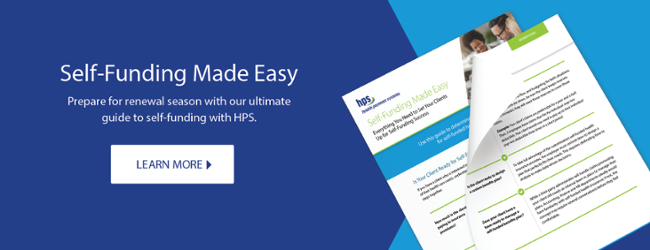
Many employers are curious about self-funded or level-funded insurance but are reluctant to learn more because they are concerned about the increased risk. With self-funded health insurance, employers skip a traditional insurance carrier and instead pay employee claims themselves. Naturally, employers are nervous about the risk of having to pay for catastrophic claims and are often unwilling to explore the cost savings self-funded insurance brings.
Fortunately, employers are able to reduce their risk and protect their business with stop-loss insurance (also known as excess insurance). When bringing your clients a self-funded insurance option, it’s important to explain to them that they don’t have to bear the burden of catastrophic costs alone.
Here’s an overview of the basics of stop-loss insurance and how it protects self-funded employers.
What is Stop-Loss Insurance?
Stop-loss insurance covers an organization self-funding their insurance from extremely large claims. These catastrophic claims are covered by the stop-loss insurance policy, rather than paid directly by the employer. The employer is only liable for claims up to the deductible amount. In the case that an employee does incur a catastrophic claim, or several employees have high claims, stop-loss insurance helps protect the organization’s cash flow.
There are two types of stop-loss insurance:
- Specific stop-loss or individual stop-loss protects the employer against a high claim on any one individual.
- Aggregate stop-loss sets a dollar amount that the employer is willing to pay for employee claims in total during the policy period. The insurance carrier reimburses the employer the difference for any overages.
The Cost of Stop-Loss Insurance
The cost of stop-loss insurance for the employer is determined by analyzing factors such as prior claims, demographics, location and network. Stop-loss premiums may increase for future years based on the number of catastrophic claims incurred during previous plan years.
For example, if an employee has a long-term illness and incurs claims that require stop-loss to kick in, the stop-loss company may charge more to cover that employee in future years or require that employee to have a higher maximum amount of claims before stop-loss kicks in. This is called “lasering,” and it affects the cost of the plan for the entire company, rather than just the one employee.
Stop-loss insurance companies set maximum stop-loss insurance amounts per incident. According to the Segal Group, the most common deductible amount is $200,000, although some companies go as high as $2 million. Higher deductibles have been more prevalent in recent years.
Stop-Loss Insurance for Self-Funded Insurance Plans
Organizations that choose to self-fund their employee benefits enjoy greater savings but also accept greater risk and must protect themselves against potential catastrophic claims. By investing in stop-loss coverage, employers of all sizes can be more confident in choosing self-funded or level-funded benefits plans.
HPS has relationships at several stop-loss insurance carriers and is ready to help brokers and their clients with negotiations. Our relationships with these carriers allow us to provide employers with a better premium quote. Contact us to learn more about how you can offer your clients a self-funded health insurance plan that fits their unique needs.


